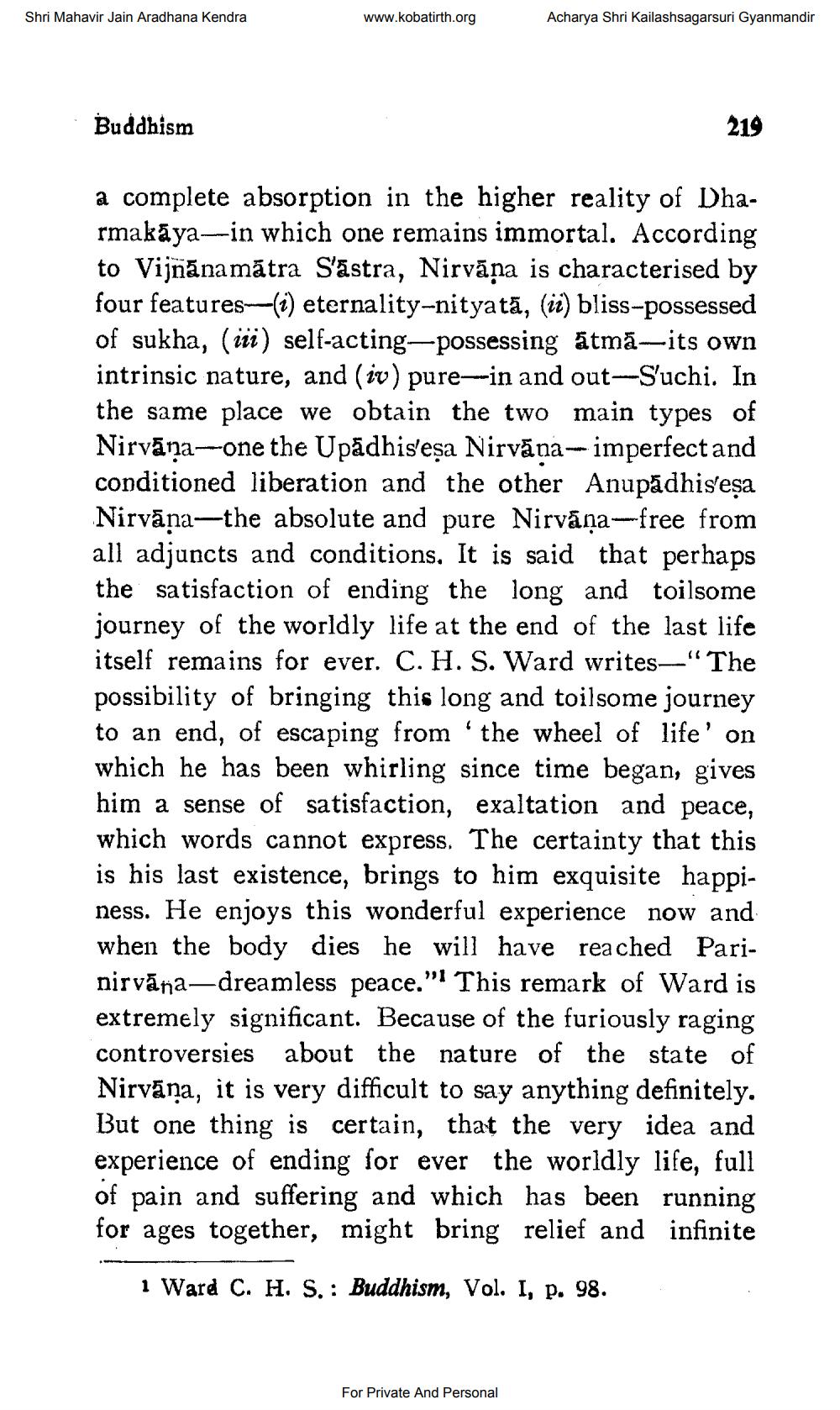________________
Shri Mahavir Jain Aradhana Kendra
www.kobatirth.org
Acharya Shri Kailashsagarsuri Gyanmandir
Buddhism
219
a complete absorption in the higher reality of Dharmakāya-in which one remains immortal. According to Vijnāna mātra Sastra, Nirvāna is characterised by four features-(i) eternality-nityatā, (ii) bliss-possessed of sukha, (iii) self-acting-possessing átmā--its own intrinsic nature, and (iv) pure--in and out-Sluchi. In the same place we obtain the two main types of Nirvāna--one the Upādhis'eșa Nirvāna-imperfectand conditioned liberation and the other Anupādhis'esa Nirvāna—the absolute and pure Nirvana--free from all adjuncts and conditions. It is said that perhaps the satisfaction of ending the long and toilsome journey of the worldly life at the end of the last life itself remains for ever. C.H. S. Ward writes-“The possibility of bringing this long and toilsome journey to an end, of escaping from the wheel of life' on which he has been whirling since time began, gives him a sense of satisfaction, exaltation and peace, which words cannot express. The certainty that this is his last existence, brings to him exquisite happiness. He enjoys this wonderful experience now and when the body dies he will have reached Parinirvāna—dreamless peace.”! This remark of Ward is extremely significant. Because of the furiously raging controversies about the nature of the state of Nirvāna, it is very difficult to say anything definitely. But one thing is certain, that the very idea and experience of ending for ever the worldly life, full of pain and suffering and which has been running for ages together, might bring relief and infinite
1 Ward C. H. S. : Buddhism, Vol. I, p. 98.
For Private And Personal




